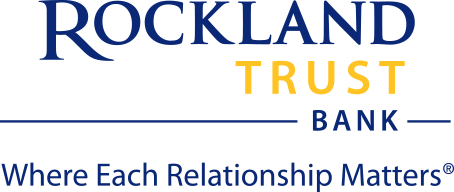Written by Steve Andrews

As the first quarter draws to a close, it doesn’t appear that the dawn of Q2 will bring with it the end of the uncertainty caused by the Trump Administration’s plans for tax cuts, tariffs, fiscal austerity, and regulatory relief. If anything, concerns have ramped up a bit, thanks to weak (weather-impacted) economic data from January, followed by just some mild improvement from February data, thus far. The stock markets remain volatile, with huge intraday swings of 2% or more, as tariff volleys go back and forth between the US, Canada, and Mexico, interspersed with more positive news on the Continuing Resolution to fund the federal government.
Tariffs, Inflation, and Economic Growth
Worries over the effects of tariffs on inflation and economic growth have moved ahead of the Fed as primary concerns for investors, consumers, and businesses alike, even though “Tariffs 1.0” back in 2017 had little lasting effect on prices. This time, the markets are not so sure. Over the past month or so, it seems like a new tariff has been proposed daily, rattling investors’ nerves and pulling stocks into correction territory before rebounding on that rare day when tariffs are not mentioned.
Meanwhile, as companies try to get ahead of proposed tariffs, US imports hit a new record high in January (up over $36B from December), boosting our trade deficit by $33.3 billion to $131.4 billion. Total Trade (imports and exports combined) is up 14.7% from January 2024, with imports up 23.1%, and exports up 4.1%. Since imports are treated as a negative in the calculation of GDP growth, the recent surge in imports might subtract as much as 3 percentage points from Q1 GDP growth. This is why analysts have lowered expectations for Q1 GDP growth to somewhere between 0% and 1.5%.
The jump in imports was expected to boost US inflation, however, February consumer prices (CPI) rose 0.2% last month. It’s the slowest pace since last August and less than half the 0.5% jump in January. “Core” CPI (which excludes volatile food and energy prices) also rose 0.2% which pulled the rise from February 2024 down to 3.1% from 3.3% in January. Producer prices (PPI) softened as well in February, up 3.2% year-over-year (down from 3.7% in January).
The Fed's Stance and Economic Adjustments
As the Fed prepared to meet for its March FOMC meeting, where it left monetary policy and rates unchanged, Fed Chair Jerome Powell said that the US economy continues to be in a good place despite elevated levels of uncertainty. The Fed remains intensely focused on the dual mandates given to them by Congress, saying that the labor market is solid and that inflation has moved closer to the Fed's 2.0% target. Since the Fed began to cut rates back in September the economy has added 191,000 jobs on average each month. It reported earlier that overall economic activity increased slightly since the last FOMC meeting on January 29, with modest increases in the manufacturing sector. Looking ahead, Powell said that the Trump administration is in the process of implementing significant policy changes in four distinct areas: trade, immigration, fiscal policy, and regulation, and the net effect of these policy changes and their impact on the economy will determine the path of future Fed monetary policy which now includes a forecast of two more rate cuts before year-end.
While the Fed is concerned that tariffs could prove to be inflationary, they stand ready to ease policy faster should the situation warrant, as they are confident that inflation will fall to their 2% target. Buffering that confidence is the fact that growth in the money supply (M2) has receded. M2 exploded by over $6 trillion during the COVID shutdowns and this drove inflation to its highest levels since the 1970s. Economic growth since 2021 has absorbed most of the excess cash, and M2 now sits around $1.5 trillion above pre-pandemic levels. This has strengthened the US Dollar which helps to dampen import prices and inflation.
Consumer Spending and Future Economic Outlook
US consumers, who have carried the economy on their collective backs, have expressed their dissatisfaction with the economy on many occasions since the Great Recession in 2009, yet they continue to spend, fed by rising incomes (private sector incomes remain ahead of inflation - up 4.2%, year-over-year - while public sector incomes rose 6.1%). Retail Sales rose 0.2% in February, following January's weather-related sharp 1.2% decline, and were up 3.1% year-over-year. However, one group worth watching are the Baby Boomers, who sit on an estimated $25 trillion in accumulated wealth from savings, investments and real estate. They have been prime drivers of services spending on leisure & hospitality, and the recent 10% correction in their stock holdings could cause a pullback in their spending. Barring that change, consumers’ habits should continue to help us weather these unsettling times.
Unfortunately, these unsettling times will continue for a while longer. April 2 looms as the date when broad tariffs are scheduled to go into effect. This will keep the markets in a state of flux since the way that the Trump administration is rolling out new policies is giving markets the “stick” from tariffs before they see the “carrot” from tax and regulatory relief. If and when the details of the carrot become clear, they should help offset a good portion of the concerns fostered by the tariffs.
The Long-Term Outlook
In the meantime, we are in the midst of a much-needed recalibration at the federal level. The Treasury Dept. recently reported that the US budget deficit for the first five months of the 2025 fiscal year, which began in September, hit a record $1.15 trillion. This cannot go on. The new administration appears bound and determined to wean the economy off federal dollars by shifting more of the responsibility for economic growth to the private sector. Treasury Secretary Scott Bessent recently called this transition a “detox” - a shifting away from artificial (read federal fed) expansion and toward a more sustainable private-sector-driven foundation.
While the two Presidents couldn’t be more different, today’s market angst can draw some parallels with the period from 1981-82 which was similarly chaotic as new President Ronald Reagan sought to rein in inflation and the federal bureaucracy. The yield on the 10-year Treasury rose above 15.80% in that battle, bringing mortgage rates with it, and Americans were none too happy, but the short-term pain gave way to a decade-long economic boom, boosted by tax cuts and deregulation. I’ve remained more optimistic than most over the past 3-4 years and could be wrong this time. I remain convinced that the goal of all this tariff talk is to bring parties to the bargaining table – not to create a world where every country charges the other tariffs of 25% or more…but it could be several months more before we know for sure.





